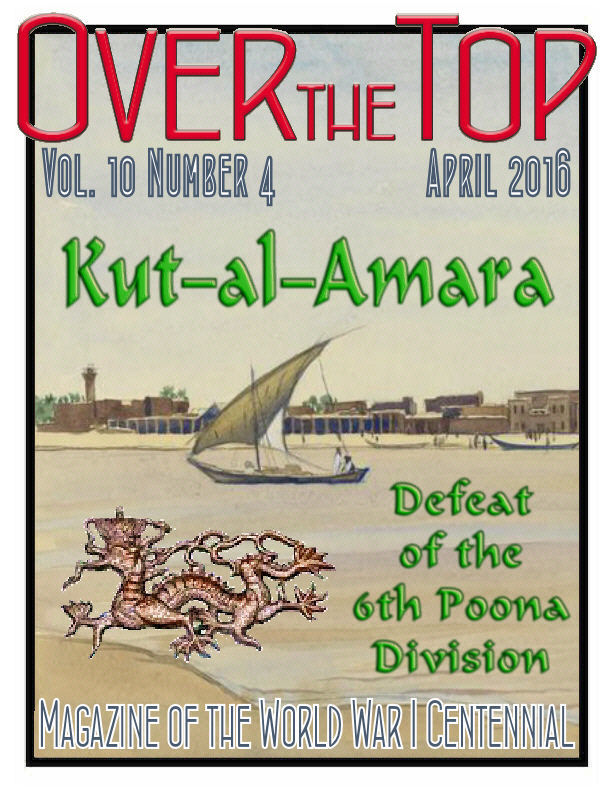
April/May
2016 |
 |
|
|


Visiting the American Battlefields
My traveling season has come, so this issue must cover two months. I'll be traveling to Verdun at the end of April through early May, and later, in August, taking a group to the Somme. Before my departure day, though, I've been asked to join in a conference call about visiting the American battlefields of the Great War. I thought our Trip-Wire readers might like to know some of the advice I plan to share.
The U.S. battlefields are more plentiful than most people realize and they are spread over the entire length of the Western Front from Flanders to the Vosges mountains. This means planning your itinerary is very important because, (a) realistically, you have to pick and choose because you cannot see everything on a single trip, and (b) since it's a long haul, driving between sites will consume a lot of time.
My groups are always surprised at how large the American battlefields are. The Meuse-Argonne, St. Mihiel, and 2nd Marne areas are on the scale of the Normandy invasion beaches. Cantigny, the St. Quentin Canal, Château-Thierry/Belleau Wood, and Blanc Mont are each roughly comparable to the Gettysburg Battlefield. There are lots to see at all of them, so again, traveling within the areas takes a good amount of time.
General Pershing has left help for us, though. The American Battle Monuments Commission he helped create has monuments and cemeteries at or very near all the "must-see" sites. The cemetery superintendants and their staffs at the are tremendously helpful. Their website and manual, American Armies and Battlefields in Europe, are also your most valuable tools for planning a trip.
Lastly, regarding food and accommodations: the American battlefields overlay all the key sites of 1914-1918. This means you can find bases in tourist friendly cities like Ypres, Amiens, Château-Thierry, Reims, and Verdun. For dinner, this means limitless possibilities for great food. For lunch — it's a little trickier — you either need help to find one of the delightful country inns to eat at or pack a picnic lunch.
Please consider a trip. It's one way for you to honor those who have sacrificed for us. Believe me, when you visit one of our cemeteries and see the ocean of crosses, you will know what I mean. MH

|
2016 Events
Saturday, 30 April 2016, will be the 20th meeting of the Mid-Atlantic Chapter of the League of World War I Aviation Historians. The meeting is at the National Air and Space Museum’s Steven F. Udvar-Hazy Center near Dulles International Airport. The program includes such topics as: Scale-modeling, the British BE-2c as a Zeppelin fighter, and U.S. Wartime Aircraft Production. Contact Carl BobrowEMAIL for details.
Don't forget the rededication of the Lafayette Escadrille Memorial outside Paris on 20 April. See our January issue for details HERE.
The increased interest in the Great War generated by the Centennial commemorations has led to an explosion of local events and ongoing displays of art and artifacts from the war. The Centennial Commission provides the best list of local, regional, and state-level World War I presentations. Click HERE to view the current list.
|
|
2016 National Seminar
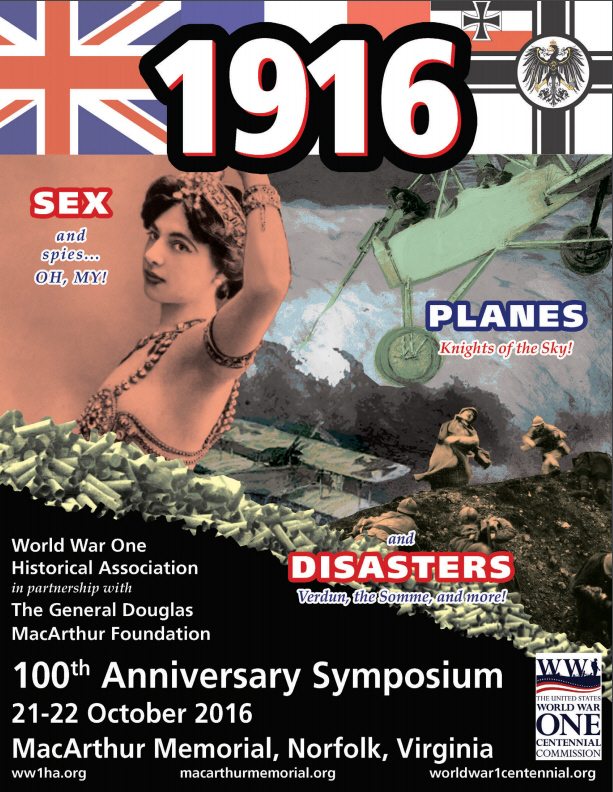
WW1HA, the General Douglas MacArthur Foundation, and the World War One Centennial Commission are holding this year’s Symposium 21-22 October in Norfolk, VA. This year’s theme is “1916: Sex, Planes, and Disasters.” GO HERE for details.

The Easter Rising
The six-day nationalist rising against the British centered in Dublin that started on Easter Monday, 24 April, in 1916 holds a peculiar place in the historiography of the Great War. Most American-written war histories don't mention it. Authors from Britain and Ireland, however, almost always consider it central to the war's story. My godfather, Owen Sweeney, was a boy in Dublin those days, and since his accounts of the excitement of the rising are part of my life, I find the war and the Easter Rising inseparable.
 Timeline: Lead-Up to the Easter Rising
Timeline: Lead-Up to the Easter Rising
 Planning the Easter Rising
Planning the Easter Rising
 The Irish Republic's Official Easter Rising Remembrance Site
The Irish Republic's Official Easter Rising Remembrance Site
 The First Day in Dublin
The First Day in Dublin
 The Executed Leaders of the 1916 Rising
The Executed Leaders of the 1916 Rising
 Belfast Looks at the Easter Rising and the Somme
Belfast Looks at the Easter Rising and the Somme
 50 Photos & 50 Facts About the Easter Rising
50 Photos & 50 Facts About the Easter Rising
 Irish Soldiers in the British Army
Irish Soldiers in the British Army

The Multiple Dangers of
Shell Concussion
The concussion from shell blasts could stop a man's heart or rupture internal organs, so that he died with no obvious external trauma. But, it could also result in a most literal form of shell shock. Autopsies on soldiers who were later killed after receiving treatment for shell shock related to ordnance explosions showed that the earlier shell concussion had caused non-fatal neurological damage from tiny hemorrhages in the brain and central nervous system. Of course, men could exhibit similar symptoms even when they had not been exposed to shell fire. In 1916, a distinction started being made between those who were shellshock wounded (W) and shellshock sick (S).

Paris Victory Parade: 14 July 1919
Bitterness! Disgust! I have recognized the crowd. . . It is the brutish elemental crowd which does not change, which slavishly acclaims Caesar or Boulanger, which yells at the vanquished, which chooses indifferently its heroes among boxers, gladiators and captains.
Marcel Cachin, Editor, L'Humanité
|

|

U.S. Centennial Organizations & Resources
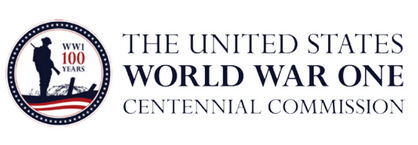
worldwar-1centennial.org/
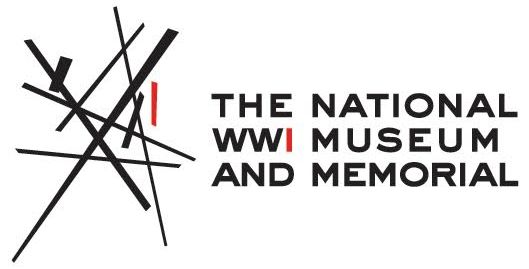
theworldwar.org/
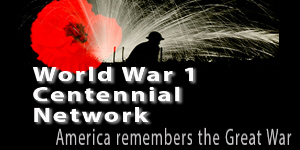
www.ww1-centennial.org/
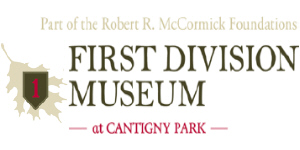
www.firstdivisionmuseum.org/

www.abmc.gov/
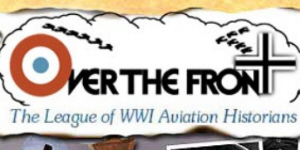
www.overthefront.com/
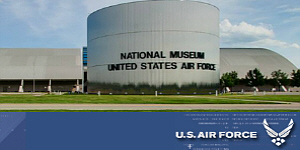
www.nationalmuseum.af.mil/
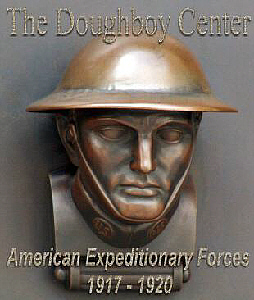
www.worldwar1.com/dbc/
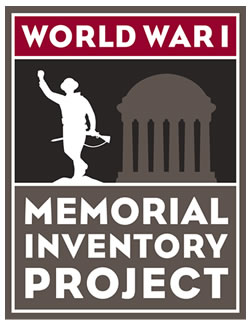
facebook.com/wwiinventory

wisconsinhistory.org/
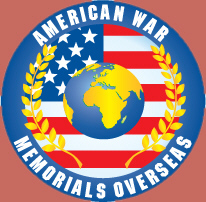
www.uswarmemorials.org/
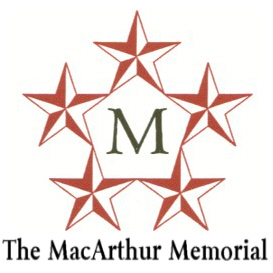
www.macarthurmemorial.org/

www.saving-hallowed-ground.org/
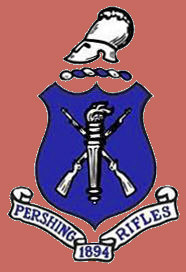
www.theprgroup.org/
Support Worldwar1.com's Centennial Effort
Shop at Amazon.com
|
The Centennial Ticker
The States Tell Their WWI Stories
There is an amazing amount of online information that state-level organizations are generating about the impact of the war. Some of it predates the Centennial, but much of it is new. The U.S. Centennial Commission has provided a platform for organizations to help encourage commemorative efforts at all levels and some states are taking advantage of this. Here are five representative state history sites. Check, though, to see what your state might be doing. And please try to join in to remember and honor the Americans who served the nation on foreign battlefields and the home front.
1. Arkansas
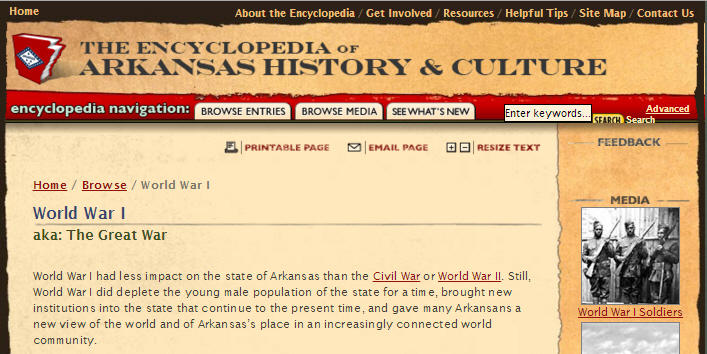
2. Pennsylvania
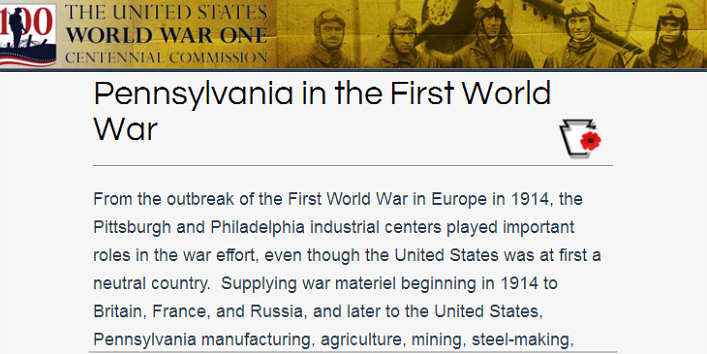
3. Missouri

4. Georgia

5 Oregon
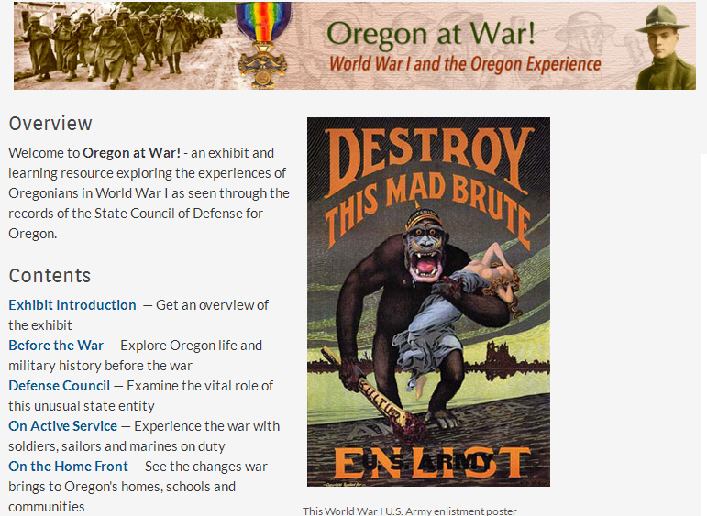
The American Field Service at Verdun
Just like their fellow American volunteers in the Lafayette Escadrille, the ambulance drivers of the American Field Service first gained the attention and admiration of the French Army and people during the Battle of Verdun, which was being waged 100 years ago. In the early days of the war, foreign volunteers were kept away from the front, but that policy changed in late 1915, just in time for France's greatest battle of the war.
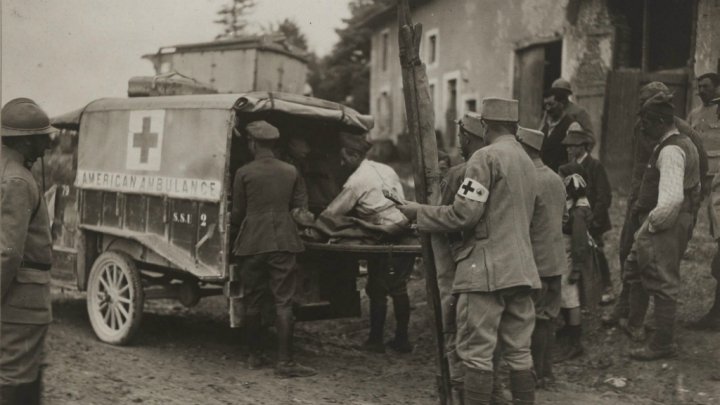
AFS Ambulance Just South of Verdun
At the end of February 1916, AFS volunteers were called to treat the many wounded at the Battle of Verdun — one of the largest and bloodiest battles of World War I. During the 10 months of fighting that ensued between the French and Germans, they cared for an estimated 60,000 wounded men using specially equipped Model-T Ford ambulances. These young Americans were witnesses to the carnage taking place on French soil.
"At the station, men who had died in the ambulances were dumped hurriedly in a plot of grass by the side of the roadway and covered with a blanket. Never was there seen such a bedlam!" Henry Sheahan, a 28-year-old Harvard alumnus, wrote about the wounded at Verdun.
Even though they weren’t in the trenches with the French infantry soldiers, many American ambulance drivers were killed by enemy fire. Overall, World War I claimed the lives of 127 of the nearly 2,500 AFS volunteers who rescued French soldiers by evacuating more than 400,000 men.
Source: France 24 News Service
|
|

Early British-American Military Discussions
April 1916
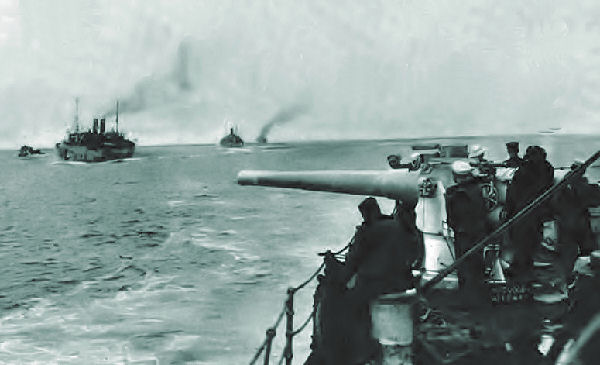
In April 1916 the Challenge of Building a Huge Army and
Transporting It to Europe Was Only a Year Away
By 1916, the Wilson Adminstration was ambivalent about the war in Europe. Its members and the President knew they might be sucked into hostilities, but were determined to hold on to neutrality. Contingency planning was discouraged. However, the prospect of being drawn into the war stimulated "bottoms up" discussions between American Army and Naval officers and British officials and officers. These became intense during the spring of 1916. They generally did not have much impact and there was little follow-through. However, it is clear by this time the British had made a high-level decision to woo America and convince her to join the war. Historian Michael McCarthy shares some detail:
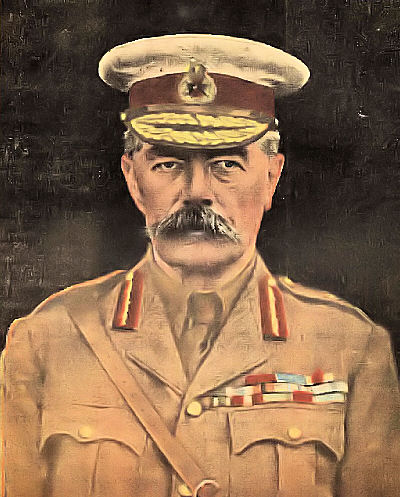
Lord Kitchener |
On 24 March 1916 a German U-boat torpedoed the French steamer Sussex, injuring several Americans. Greatly angered, Wilson sent a note to the German government demanding that they renounce their submarine policy. Germany finally acquiesced on 4 May, but not before this event had further tarnished that nation in Wilson's eyes. Meanwhile, the British Secretary of State for War, Field Marshal Lord Kitchener, was meeting with Lieutenant Colonel Charles O. Squire, the American Military Attaché in London. Kitchener suggested that a break in diplomatic relations between Germany and the United States would inevitably lead to war, either through a German declaration or through some overt act that would force Wilson's hand. The two discussed the possibility of committing an American expeditionary force to European soil. Kitchener claimed that American involvement would hasten the war's conclusion and, when pressed, even claimed that it would do so "at least by the end of the year." Either Kitchener's assessment of the American military was grossly unrealistic or, more likely, he was hoping to entice the Wilson administration into joining the fight through the promise of a hasty finish. Kitchener also suggested that American troops be trained in France instead of in the United States so that they could enter combat "in the shortest possible time."
Newton D. Baker, easing into his new position as Secretary of War, received this memorandum with little interest. Again, no evidence exists that Baker briefed Wilson on this meeting between Kitchener and Squire, probably for the same reason that Acting Army Chief of Staff Scott had kept his earlier mobilization questions to the War College Division hushed. In addition, Wilson was apparently kept ignorant of discussions to mobilize US shipping to carry an American army to Europe in the event of war. This proposal, prepared on 4 April by American naval and military attachés in London and Paris and by two American officers assigned with the British Expeditionary Forces, warned that "any system adopted at the moment and operated without previous study and experience is more than apt to bring discredit on the Navy, and useless danger to the army and the Nation." Even the military planners ignored this recommendation until November 1916. Again, coordinated military planning was forsaken and once more American military leaders neglected realistic contingencies, leaving the consideration of such ideas to the very eve of the American declaration.
Excerpted from: "Lafayette, We Are Here:" The War College Division and American Military Planning for the AEF in World War I by Michael McCarthy
|
|

Announcing Our 2017 Centennial Battlefield Tour Schedule

2017 Program
Valor Tours is happy to announce its 2017 World War I Centennial Battlefield Tours. Our brochure is currently in preparation — subscribers to the Trip-Wire will receive it via email as soon as it is ready. Just click on the "Sign Up" button on the top of the page if you haven't registered yet. Here are some details for you:
8 – 15 May 2017: Flanders 1917 Campaign
Includes: Vimy Ridge, Messines, and Passchendaele
24 July – 3 August 2017: Caporetto and the Italian Front
Includes: The Eleven Battles of the Isonzo, Caporetto 1917, Monte Grappa and the 1918 Line
2016 Program
2 – 10 May 2016: Verdun In-Depth
Includes Key Sites on the Argonne, St. Mihiel Flanks and the Voie Sacrée
14 – 21 August 2016: The Somme In-Depth
Visiting the Hawthorne Mine Crater, the Soccer Balls of the Somme Site, and Where Alan Seeger Met His "Rendezvous."
Rooms Still Available on Both of Our 2016 Tours. The full brochure covering both trips and registration details can now be downloaded at:
(http://www.worldwar1.com/pdf/ValorTours_2016Flyer.pdf)
|
|
|

|

Featured Author
The Hardcore Verdun Works of Christina Holstein
Readers of the Trip-Wire have long enjoyed our periodic articles from historian Christina Holstein. While Christina is knowledgeable about all the events of the Great War's Western Front, her real love is telling the story of the 1916 Battle of Verdun. She has just published her fourth Verdun battlefield guidebook and I want to recommend the entire series to our readers.
In the past, we have spoken highly of Alistair Horne and John Mosier's volumes on Verdun and there are several other good general works on the battle. However, Christina offers something beyond those books. She has walked the battlefield at Verdun tirelessly and, being a professional translator, has also been able to research original sources in French and German on the details of the fighting. The four books she has turned out have a level of detail and insights about the character of the fighting at Verdun available nowhere else. I have found, for instance, that some of my travelers are utterly fascinated by the Verdun forts. Her volumes on Douaumont and Vaux are simply the best resources available on the two most famous of the forts. The latest of her works on the Left (west) bank of the Meuse is the first in-depth treatment I've discovered on the fighting at Mort Homme, Hill 304, and the little known, but truly horrible, Bois de Malancourt. Last — here's a very personal endorsement — I've used Christina's volume Walking Verdun, to plan my upcoming Verdun In-Depth battlefield tour.
|
Reload page if any book covers fail to appear.

The Flies of Mesopotamia
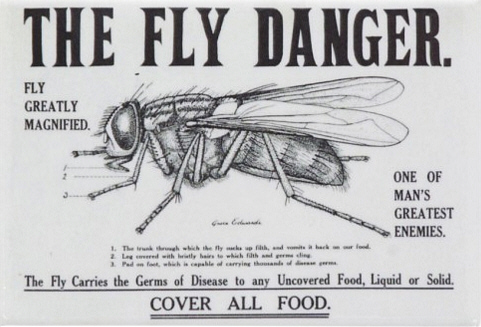
Poster for British Camps in Middle East
There are flies that bite like bulldogs everywhere. . . The flies are awful; one black web of them this morning; in one's hair and eyes and mouth, in one's bath and shaving-water, in one's tea and in one's towel.
A wave of great heat has come and the air is black with flies. . . Nothing that I have ever seen or dreamed of came up to the flies. They hatched out until they were almost the air. They were in myriads. The horses were half mad. The flies were mostly tiny. They rolled up in little balls, when one passed one's hand across one's sweating face. They were on your eyelids and lashes and in your lips and nostrils. We could not speak for them, and could hardly see.
We went into General Younghusband's tent. The flies, for some reason, stayed outside. He put a loose net across the door of the tent. They were like a visible fever, shimmering in the burning light all round. Inside his tent you did not breathe them; outside you could not help taking them in through the nose and the mouth.
My eyes were bound, and I got on a horse that started bucking because of the torture of the flies.
KUT, 1916
by Aubrey Herbert
|
|

Mountaintop Warfare
Le Linge
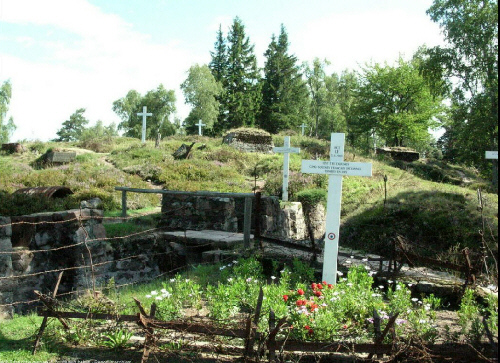
Le Linge Today
The struggle for Le Linge, a 1000-meter tall hilltop located 14 miles west of Colmar in the Vosges Mountains, was one of the bloodiest battlefields of the Great War, but is mostly forgotten today. The hill was the site of some of the closest, most intense trench fighting in history. The Germans organized their defense here in 1914 in order to prevent French troops advancing on Colmar. In 1915 this area was part of the Alsace, which Germany considered its own. Despite having a much more secure position on a higher ridge west of Le Linge, Joffre insisted his troops keep attacking. The peak fighting, between 20 July and 15 October 1915, was extremely violent, with 17,000 killed counting both the French and German losses. Gas and flamethrowers were used here. Subsequently, both sides came to realize that a major breakthrough in the Vosges was unfeasible and major operations in the region ceased for the duration.
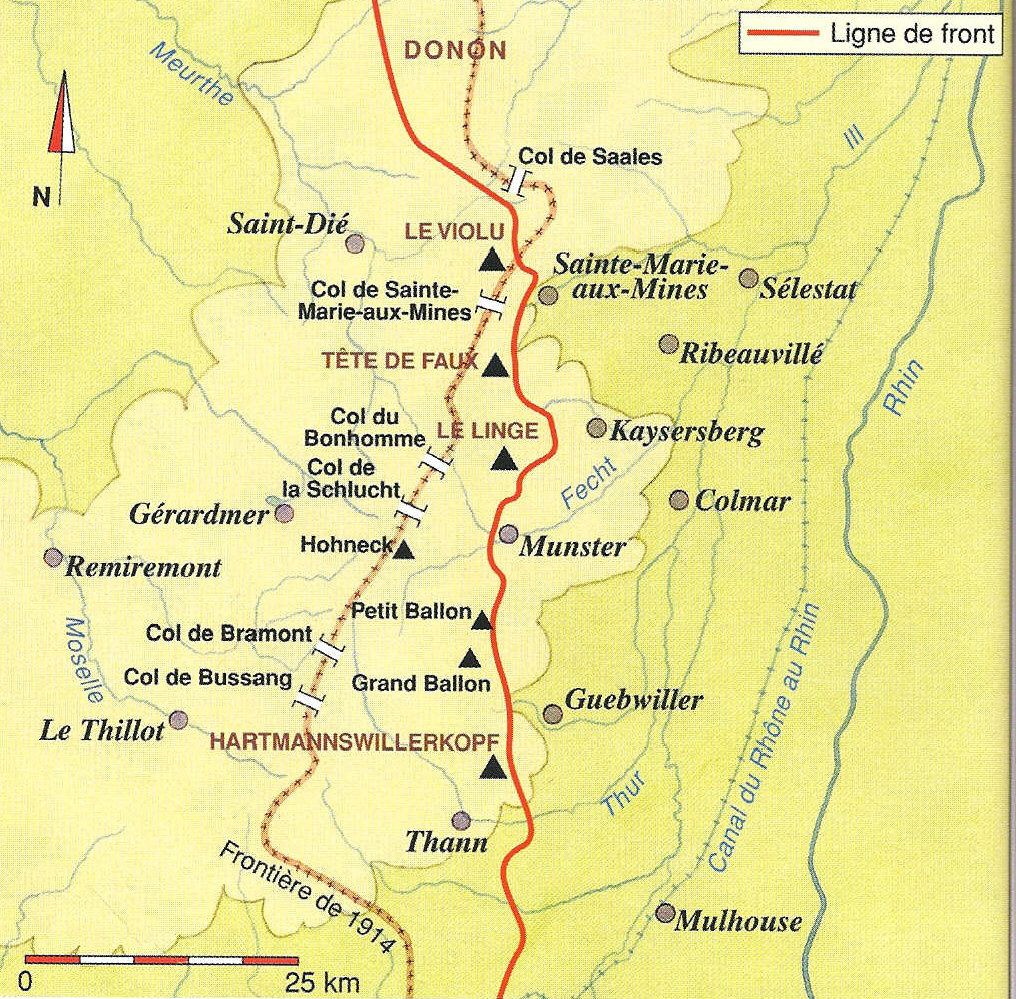
Le Linge's Location (Center of Map)
The area shown here between the 1914 border and the line of 1915–1918 was the only German territory occupied by the French Army before the Armistice. The battlefield is situated at the top of a rocky hillock, dotted with a few trees and lined with trenches dug out of the sandstone. The bunkers and barbed wire which crisscrossed the area have been retained. A very moving memorial site, the battlefield contains numerous black-and-white crosses marking the final resting place of French and German troops. A museum includes numerous items found on the site: weapons, personal belongings, munitions, and other relics. Models of the battlefield, video clips, and photos further add to the experience.
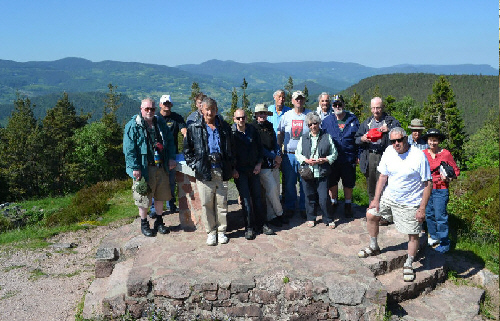
My 2012 Group at Le Linge
Some distinguishing aspects of the Le Linge site shown below: the extensive use of concrete and stonework by both sides and the well-preserved barbed wire barricades throughout. As on most other areas of the Western Front, when things stabilized, the German forces held the higher crest and the French were positioned on the lower slopes.
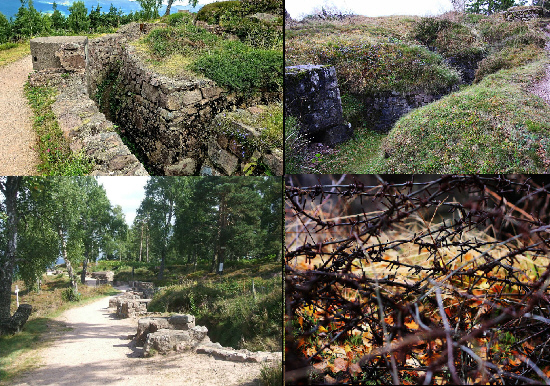
|
|
|
Thanks to each and every one of you who has contributed material for this issue. Until our next issue, your editor, Mike Hanlon. |
|
 (Or send it to a friend)
(Or send it to a friend)
|
Design by Shannon Niel
Content © Michael E. Hanlon
|
|
|









